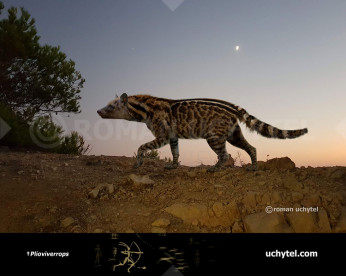Pachycrocuta brevirostris
3636Pachycrocuta (Pachycrocuta Kretzoi, 1938)
Order: Carnivora
Family: Hyaenidae
Time period: Middle Pliocene and the Middle Pleistocene, about 3 million to 500,000 years ago.(Africa and Eurasia)
Size: 1,7 m in length, 105 cm in height, 130 kg of weight
Typical representative: Pachycrocuta brevirostris Aymard, 1846
Pachycrocuta was a genus of prehistoric hyenas. The largest and most well-researched species was the giant hyena Pachycrocuta brevirostris, which stood about 100 cm at the shoulder and may have weighed 150 kg — the size of a lioness. This would make it the largest hyena to have ever lived. It lived between the Middle Pliocene and the Middle Pleistocene, about 3 million to 500,000 years ago. Fossil remains have been found in many localities of Eurasia and southern and eastern Africa. It probably was a small-pack hunter of large animals (up to deer size and occasionally larger) and also scavenged for food. Possibly it preferentially did the latter because it was a very heavyset animal not built for chasing prey over long distances. In this aspect it would have differed from the Spotted Hyena of today, which is a more nimble animal that, contrary to its image as a scavenger, usually kills its own food but often gets displaced by lions.
Pachycrocuta (Pachycrocuta Kretzoi, 1938)
Order: Carnivora
Family: Hyaenidae
Time period: Middle Pliocene and the Middle Pleistocene, about 3 million to 500,000 years ago.(Africa and Eurasia)
Size: 1,7 m in length, 105 cm in height, 130 kg of weight
Typical representative: Pachycrocuta brevirostris Aymard, 1846
Pachycrocuta was a genus of prehistoric hyenas. The largest and most well-researched species was the giant hyena Pachycrocuta brevirostris, which stood about 100 cm at the shoulder and may have weighed 150 kg — the size of a lioness. This would make it the largest hyena to have ever lived. It lived between the Middle Pliocene and the Middle Pleistocene, about 3 million to 500,000 years ago. Fossil remains have been found in many localities of Eurasia and southern and eastern Africa. It probably was a small-pack hunter of large animals (up to deer size and occasionally larger) and also scavenged for food. Possibly it preferentially did the latter because it was a very heavyset animal not built for chasing prey over long distances. In this aspect it would have differed from the Spotted Hyena of today, which is a more nimble animal that, contrary to its image as a scavenger, usually kills its own food but often gets displaced by lions.

-797x638.jpg)
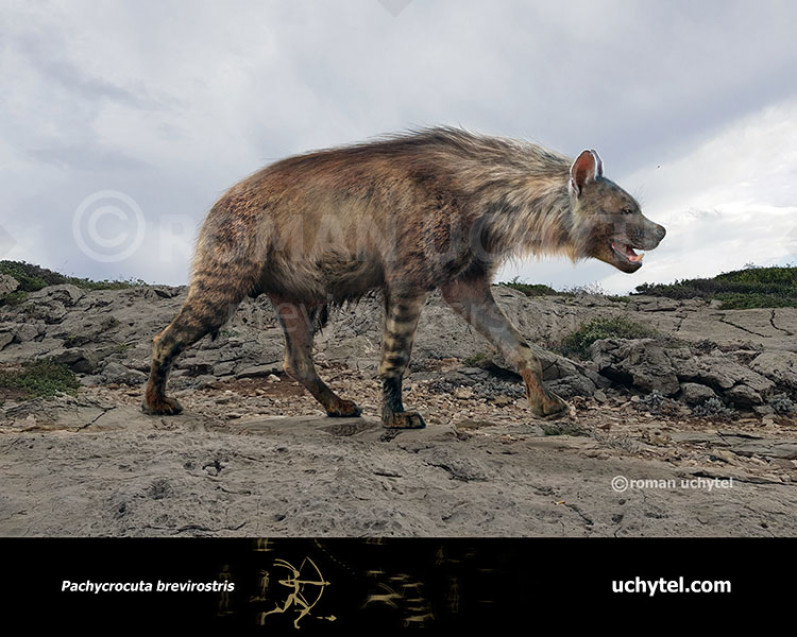
1-797x638.jpg)
2-797x638.jpg)
-797x638.jpg)
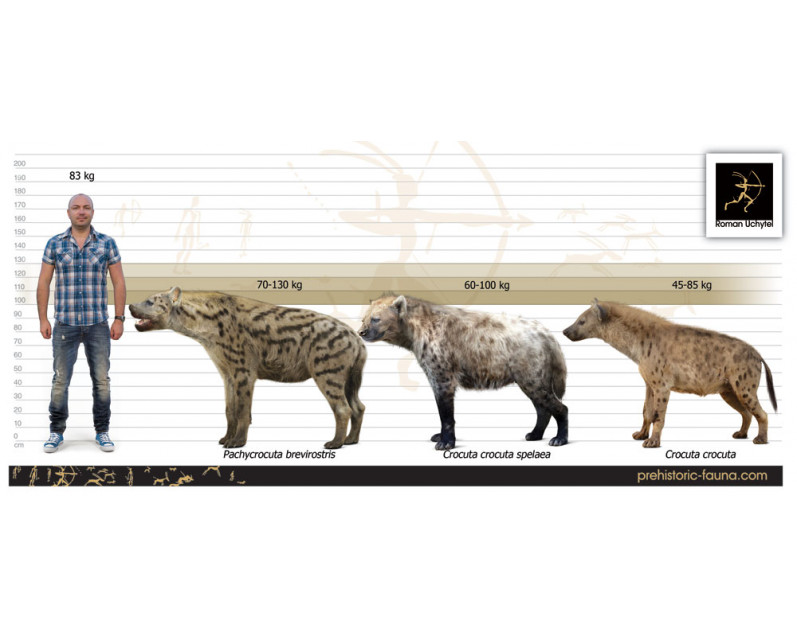
-70x56.jpg)

1-70x56.jpg)
2-70x56.jpg)
-70x56.jpg)

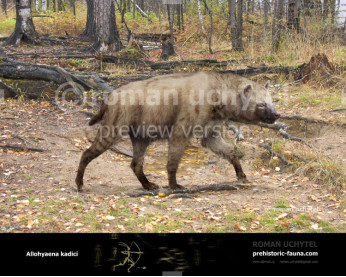
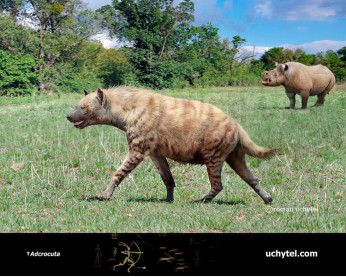
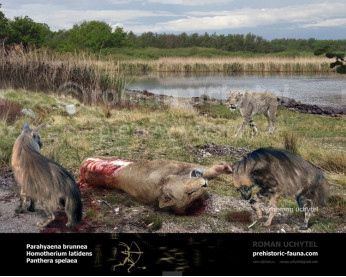
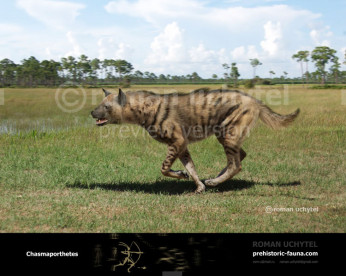
-346x277.jpg)
